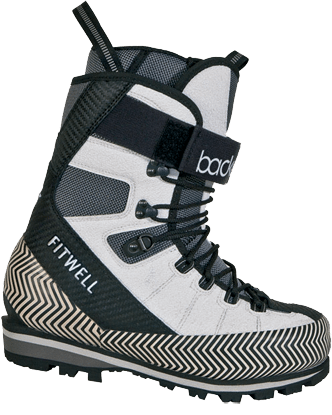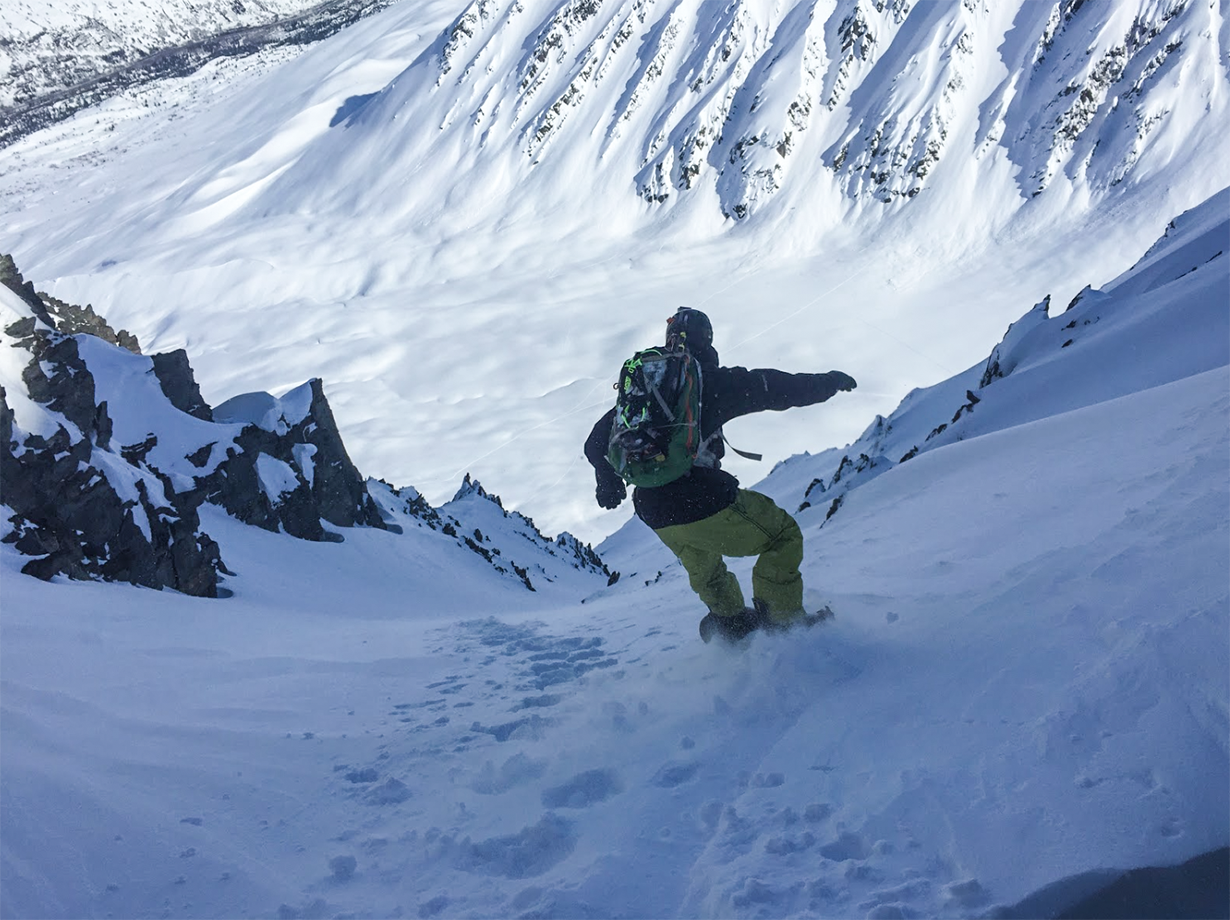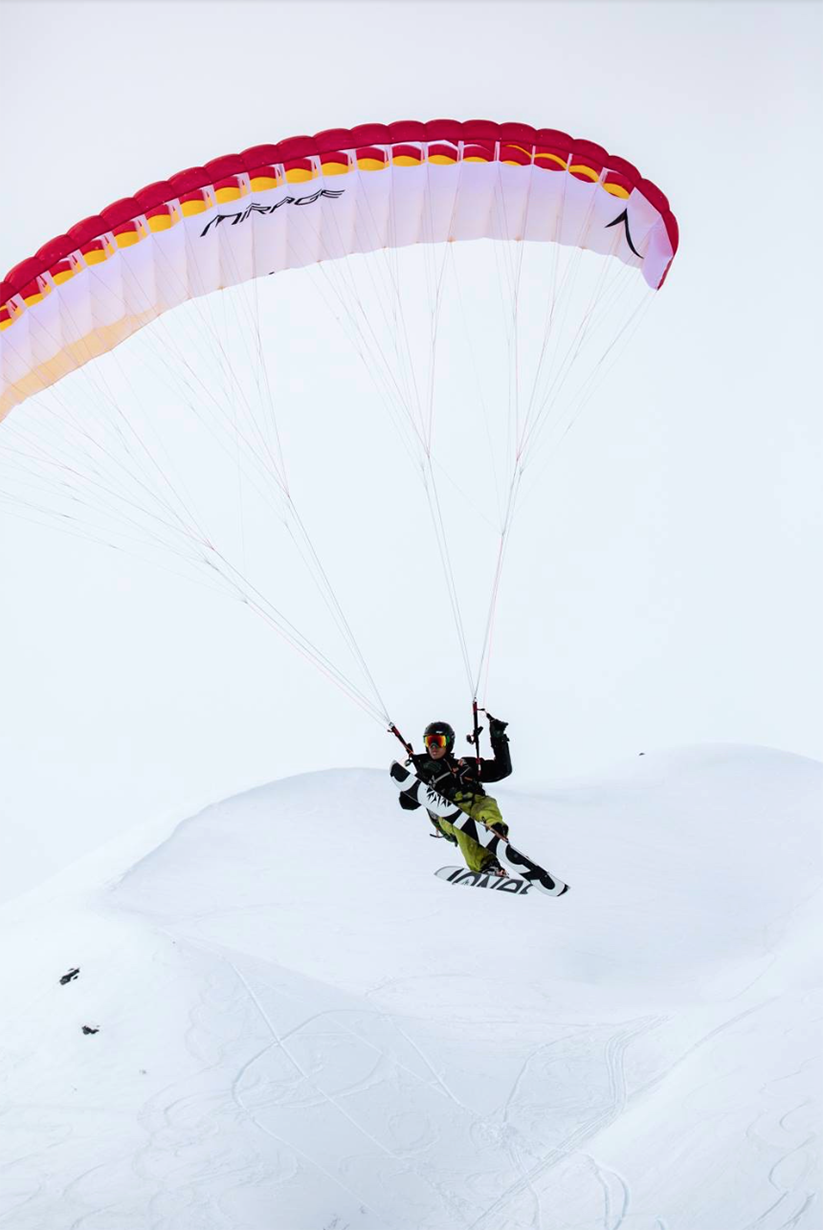
2018-2019 Fitwell Backcountry Snowboarding Boot
Size Tested: 280 Mondo Point (~ US 10.5)
Stated Features:
- Vibram sole/outsole
- Removable inner liner with independent lacing and anti-skid inserts
- EVA midsole cushioning – minimized for maximum board feel
- Heel welt (for semi-automatic crampons)
- Velcro Power strap
- Traditional lacing
Stated Weight: 1270 g
Blister’s Measured Weight per Boot: 1432 & 1426 grams
MSRP: $635.95
Board / Bindings:
- 163 Amplid Milligram Splitboard / Karakoram Carbon Prime
- 161 Jones Carbon Solution Splitboard / Karakoram Carbon Prime
- 163 G3 Scapegoat Splitboard / Spark R&D Blaze
- 164 K2 Gyrator / Burton Cartel
Test Locations: Anchorage Front Range backcountry, Turnagain Pass backcountry, Thompson Pass backcountry, Chugach Mountains, Hatcher Pass backcountry, and Talkeetna Mountains, Alaska
Days Tested: 35+
[Note: Our review was conducted on the 15/16 Fitwell Backcountry Boot, which was not changed for 16/17, 17/18, or 18/19, apart from graphics.]
Introduction
The Italian-made Fitwell Backcountry snowboarding boot is intended for serious backcountry endeavors. Although several companies (including Deeluxe, Thirty-Two, and K2 for the 16/17 season) have attempted to build a dedicated boot for the avid backcountry snowboarder / snowboard-mountaineer, Fitwell has had the reputation for delivering the best product by far.
When testing an aggressive snowboarding boot of this caliber, I am looking for a boot that will:
(1) Withstand the rigors of mountaineering
(2) Still feel like a snowboard boot
(3) Be playful enough for typical backcountry/powder days.
Construction
One of the most appealing features of the Fitwell Backcountry boot is the burliness of the shell, including the Vibram sole, rubber reinforcement along the toe box and heel (similar to that of a mountaineering boot), the semi-automatic crampon compatibility via the heel welt, carbon shank in the sole, velcro booster strap, and the traditional lacing.

The upper boot is composed mostly of leather, and the lower portion is protected by a thick rubber to protect against abrasion from rock, ice and crampons. The boot seems built to last (in terms of both construction and waterproofing) and I’ll dive deeper into how well it’s stood the test of time later in the review.
Fit
I typically wear a boot size 9.5 (in Nike, Deeluxe, and Scarpa) or 10 (in Thirty-Two) since I prefer a snug fit with a slightly wider sole. I originally was sent a pair of 285’s and found that I had about a quarter-inch heel gap when my toes were pushed into the toe box, in addition to some very uncomfortable pressure points along the top of my arch. The boot simply did not feel right.
After speaking to a Fitwell representative, he suggested that I run a smaller size, and the 280’s felt much better. The pressure points were alleviated, and the boot felt very snug right out of the box — a must for a boot of this stiffness. When ordering the boots, I would suggest talking with a representative to ensure the right size when ordering.
Liner
The Fitwell Backcountry features a removable inner liner with an independent tightening mechanism and “anti-skid inserts” along the bottom of the sole, to keep the liner firmly anchored in the shell. The tightening mechanism is like most modern boots, in that you pull to the appropriate tension and it locks automatically. It is similar to what Deeluxe, Nike and Thirty Two use, however it seems more difficult to get a truly custom fit. It is not as simple as just pulling the top of the lacing system and having the liner tighten in all the right places. The best fit is achieved by really working the laces on the lower portion of the liner first, and working your way up, as you would with traditional laces. The lacing system and anti-skid inserts along the sole makes the inner liner a very functional slipper for the tent or cabin.
The liners pack out slightly, but I must emphasize the importance of a snug fit since the boot features a carbon shank along the footbed ( imilar to a mountaineering boot— which means no flexing of the sole).
Although the liners are technically not thermo-moldable, I broke them in by tossing in boot dryers and cranking up the floor-board heat in my truck, while camping in Thompson Pass, Valdez during a 6 week long trip.
The fit was surprisingly comfortable right from the start. Break in time was about 8-12 days of casual touring, with little to no blisters (unlike the Deeluxe Independent BC). A few weeks of touring and the liners felt great, while the boot shell kept the boot feeling just as stiff as when I first used them, which is good and bad( I’ll get into that in the Performance section).
Although I have not had issues with the liner being too soft, it seems that many people have been successful throwing in a pair of Intuition liners in the Backcountry shells, specifically if there is discomfort along the shin.
Vibram Sole / Outsole
One of the major selling points of the boot is the Vibram sole and ability to use a semi-automatic crampon (such as the Black Diamond Cyborg, Grivel G12 etc.) due to the heel welt. The tread is very aggressive for rock, snow and ice, similar to the Deeluxe Independent BC. However, the toe box profile is much smaller and narrower compared to the Independent BC. In addition, a tough rubber lines the toe box (the zebra print portion) making the boot much more comfortable in crampons.
The narrower toe box also allows for better penetration in snow and ice, and more dexterity while scrambling on rock. After two seasons of using crampons with the Independent BC, the toe box became deformed and seams blew out. The Fitwells however, do not seem phased by extensive crampon use, or by setting boot packs while using Verts.

In addition, the boot is built exceptionally well for anyone who accesses terrain via snowmachine. The tread grips the running boards without any issues, and is durable enough to withstand the rigors of a few seasons use. This boot, while in Thompson Pass, became the envy of most snowboarding snowmachiners—it’s a durable boot that can withstand abuse and abrasion from the sled, yet ride well snowboarding.
Waterproofing
With over 30 days of use and long days (12+ hours) in the backcountry, the waterproofing still seems perfect. The entire build of the boot, including the black and white “zebra striped” rubber reinforcement along the toe box and heel, seems to be built to last, and adds protection to the lower part of the boot to protect against the elements.
NEXT: Performance, Touring, Etc.

Super helpful review so thank you!
awesome review, helps me a lot!! Thanks!